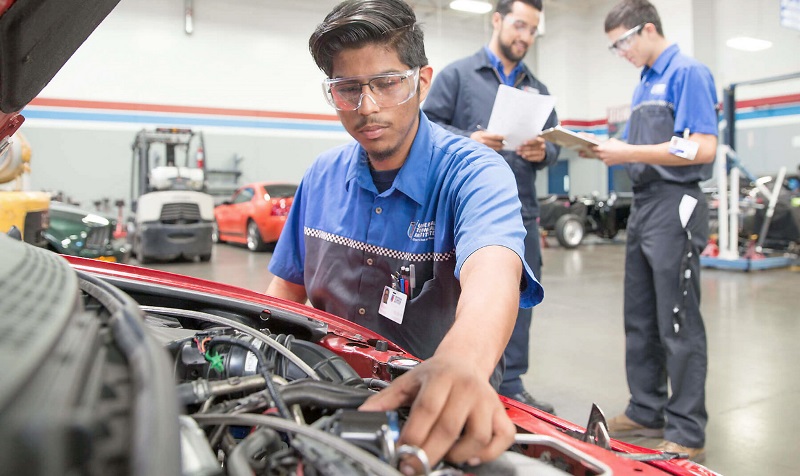
Fitness technology is everywhere, from wearable devices to virtual reality. In the future, we can expect robots that can assist with basic tasks to perform simple tasks in the fitness industry. These robots can save money and allow staff to spend more time training. Social media is one way technology will help fitness businesses. One of the most recent technological trends is live streaming. Find out what's currently available by reading on. There's something for everyone! No matter if you're looking for a virtual class or an AI assistant to help you exercise, the latest fitness technology is sure to make your life easier.
Wearable fitness equipment
As technology advances, wearable fitness technology is becoming more popular. Wearable devices can track your heart rate, calories burnt, and even your sleep quality. It is crucial to establish a standard for evaluation in order to guarantee the accuracy of the results, especially as newer devices are available. To address the growing challenges facing this market, a group of Yale School of Medicine research scientists led by Garrett Ash '15 PhD met with industry players. These are the key takeaways:
Wearable fitness technology that uses sensors and smartphone apps is leading includes wearables such as Fitbit, which allows customers to track their progress or learn more about how they are doing. Fitbit launched in 2009 and is still one of the most loved wearables. The company's original product sold 444.7 million units globally. The Fitbit was a major innovator in the fitness market, with smart clothing and augmented reality headsets. Many companies have created new devices in response to the global pandemic.

Apps to manage clients and staff
There are many benefits of staff and client management apps for fitness technology. These apps streamline the process of joining a gym, provide standardized fitness assessments, and allow members to easily schedule sessions. You can also store files, use mobile apps and make payments easily. They also help you design custom workout programs for your clients, track their check-ins and acknowledge personal bests. Below are the top three fitness apps.
10to8 automates daily operations. 10to8 makes it an ideal choice for any fitness center, with features such as auto-renewal memberships, member notifications and email reminders. The software's intuitive interface and customizable features make 10to8 suitable for any type of business, including small studios or larger clubs. You can also cancel or reschedule appointments without any hassle with the software. Other features include the ability to monitor client appointments and send automated email reminders.
Virtual coaching and training
Online video allows clients to access fitness classes at any time and from any place. It is possible because of improvements in video systems, faster Internet and greater fitness awareness. You can also access fitness videos on-demand or on DVDs and VHS tapes. With these new tools, virtual coaching can offer the same level of quality as traditional training. Some potential drawbacks to virtual training include the inability to motivate clients and limited space.
Virtual coaching, despite its potential, may not be the right choice for everyone. Virtual teaching platforms are becoming increasingly popular in gyms. They are also expensive and may not be affordable for all. We don't recommend such high-end models. Instead, move quickly and switch between apps to better adapt to changing circumstances. If you are a fitness coach, consider the benefits and disadvantages of virtual coaching.

Virtual reality fitness
VR has the potential of revolutionizing how we exercise. Users can turn their workout routine into a game and get instant rewards. In some VR fitness games, players can even upgrade their most important character. In the future, this technology will likely be more readily available. VR headsets can be quite costly at the moment. But, with better technology, their prices will likely drop. In time, they may be cheaper and more sleek.
Also, VR fitness technology is quite entertaining. Many VR fitness apps are interactive and enjoyable. Virtual reality headsets or hand-held devices are worn by the players to completely block out all of the world. Virtual reality games replicate real physical activities. Players use their body movements as the controller. It's a great way to motivate yourself. Because the user can interact directly with different characters, different environments, and have a unique experience, it is truly amazing. VR games for fitness are fun, but they can also be expensive.
FAQ
How long is an apprenticeship for an automotive mechanic?
A three-year apprenticeship in automotive mechanics takes. This includes two years in school and two as an apprentice. The first year is spent learning all aspects of the trade, including theory, practical skills, and safety procedures. This year, you will also learn how to safely and efficiently use tools. You'll spend the second year in on-the-job training, where you will gain experience in various trades. You will have the opportunity for formal training during these years.
The last year of the program is dedicated to gaining certification and qualifications in the field. These include NVQs, which are obtained after passing industry-specific exams. In addition, there are HNCs (Higher National Certificates) that cover general subjects such as management, business administration, and customer service. City & Guilds certificates offer qualifications in certain trades.
Are you looking for a career as an automotive mechanic?
The automotive industry is full of exciting opportunities for those who are dedicated to excellence. You can only succeed in this field if you work hard and learn from others.
Excellent communication skills are essential as you will spend most of the time speaking to customers or other employees. It is important that you are willing to travel, work long hours and be able to commute.
You can take classes at universities and community colleges if you are interested in a career as an automotive technician. Many schools have programs that are specifically tailored for students who are interested in automotive sales, repair, and customer service.
Mechanical engineering should be your first choice for a degree. A bachelor's degree can be obtained in four years.
Many employers will also hire graduates straight from school. It's a smart idea to begin looking for work while you have the opportunity to study part-time.
After you've finished your education, it's likely that you'll need to go through some training before you can be hired as an auto technician.
This means you'll need pass exams like the Automotive Services Excellence (ASE), certification exam. This test covers topics such engine maintenance as brakes, steering, suspension, etc.
Once you pass the ASE test, your license can be applied for by the National Institute for Automotive Service Excellence.
You can perform repairs on private cars by obtaining a license. Based on the services rendered, you will receive compensation.
Not all states require licensing. If you intend to work in another state, however, you will need a license.
Some states won't issue licenses until you have completed a certain amount training. This could be you.
What is the length of an automotive training course?
A course in automotive lasts three years.
The first year focuses on theory and learning about cars. Practical training is the second year. You will learn to drive, fix engines and perform other tasks around the car. The last year is spent at a local shop, where you will get practical experience with real-world problems.
What are the basics of car mechanics?
To be an auto mechanic, you don't have to know much about cars. The only thing you need is the ability to fix them. Most people begin by changing brake pads and tires, before moving on to more complicated repairs.
You need to be able read and comprehend diagrams, follow written instructions and adhere to basic principles of good practice. You'll also need to be able to judge whether parts need replacing or repairing.
It is important that you have proper training and guidance before you attempt to repair vehicles. This is especially true if you deal with expensive components such as engines or transmissions.
Although you won't be required to know much about cars you should have a solid understanding of the fundamentals and principles of mechanical engineering. This includes understanding the mechanics of how engines and brakes work.
It is also important to remember that you will need to be able to handle many situations. For instance, you might find yourself in charge of a vehicle that has been in a serious accident. Also, you'll need to be familiar with dealing with accidents or breakdowns.
It is important to be open to learning new skills quickly. You will need to be able not only to diagnose problems but also to perform simple maintenance tasks like tightening bolts and nuts.
Statistics
- Apprentice mechanics earn significantly less hourly than mechanics who have completed training, with a median wage of approximately $14.50 an hour, according to PayScale. (jobhero.com)
- According to the BLS, total auto technician employment is expected to exceed 705,000 by 2030. (uti.edu)
- 52% of Mechanics in the United States think their salaries are enough for the cost of living in their area. (indeed.com)
External Links
How To
How to diagnose your vehicle properly for repair
You should first examine the symptoms your car is showing to determine if it requires repairs. Follow these steps to properly diagnose your vehicle.
-
Check engine lights. The dashboard light indicators, including the engine light, oil pressure gauge, battery light indicator, coolant temperature gauge and RPM gauge, should be checked. It could indicate that your vehicle is having problems.
-
Examine the treads of the tires. If the tires are worn out, they could cause problems with handling and braking. It is also important to inspect the wheel treads. They should be clean and smooth. To do this, remove the wheels and take them out. To check the condition of your treads, use a flashlight.
-
You should always monitor the level brake fluid. You must keep track on the level of brake fluid in your vehicle. This will ensure that your brakes run smoothly. If the brake fluid level is low, your brakes might fail when you apply pressure to them.
-
Test the suspension system. A suspension system is designed to absorb vibrations and shocks. It provides better control and allows smoother acceleration and deceleration. If your vehicle has a suspension problem, it might feel wobbly or shake uncontrollably. Try putting some weight on your front or rear axle to determine if you have a suspension problem.
-
Take a look at the steering column. Steering columns connect the steering wheels to other parts of the vehicle. Steering columns can be damaged by accidents. It is recommended to replace any steering column that feels loose, or shakey.
-
Observe the exhaust pipe. The exhaust pipe helps move gases from a combustion chamber into the atmosphere. If your exhaust pipe leaks or cracks, it will allow harmful fumes into your cabin. It is also important to repair any bends in your tailpipe immediately.
-
Look under the hood. Look underneath your hood to see if anything looks strange. Fluids could be leaking from your engine. A professional technician should be contacted if your engine compartment emits an unusual smell.
-
Make sure to check the air filter. The outside environment can collect dust and other debris in your vehicle's air filters. A dirty filter can lead to a poor vehicle's performance. Replace your air filter regularly.
-
The fan belt should be checked. Your vehicle's fanbel is what connects the engine and the transmission. If it breaks, the engine won't turn over. It is very easy to replace your belt. You only need a screwdriver or pliers to replace your belt.
-
Check the radiator hose and hoses. The radiator-hose carries water to the engine. It can become cracked or damaged and leak hot liquid onto your engine. To repair the leaky hose, all you need is a pair if needle-nosepliers.
-
Make sure you have the windshield wipers checked. Windshield wipers use electricity to clean away snow and rain. If they stop functioning, they can leave streaks in your window glass. Change the washer fluid to fix the problem.
-
The battery cables should be checked. Your car's electrical system is powered by batteries. Always disconnect the negative wire before you replace batteries. Failure to do so can damage your alternator.
-
Make sure your headlights are working properly. Headlights are used to illuminate the road ahead. If they don't work properly, it can cause poor visibility. To determine if your bulbs are out of date, check them.
-
Always check your lights. If you approach other drivers at night, lights will warn them. One that doesn't work could cause you to be distracted, and possibly lead to an injury.
-
You should inspect your brakes. Before you collide with another vehicle, brakes will slow down the car. You may lose control of your vehicle and crash if the brakes don't function properly.
-
Check the oil regularly. Keep your engine lubricated with oil. It helps keep metal parts from getting too worn down. It is recommended to change the oil once a month.